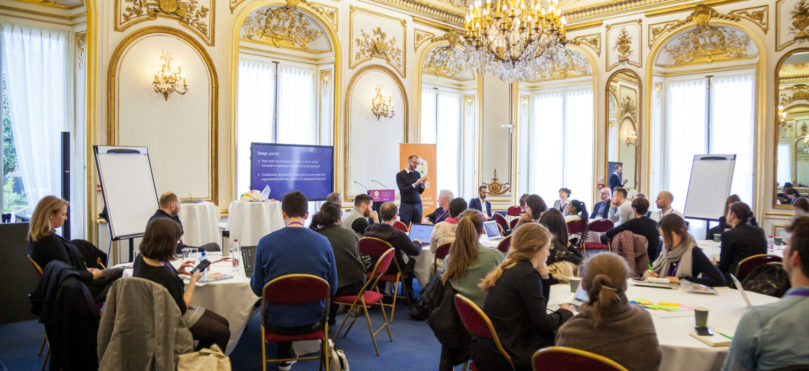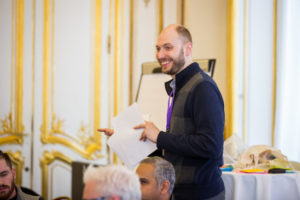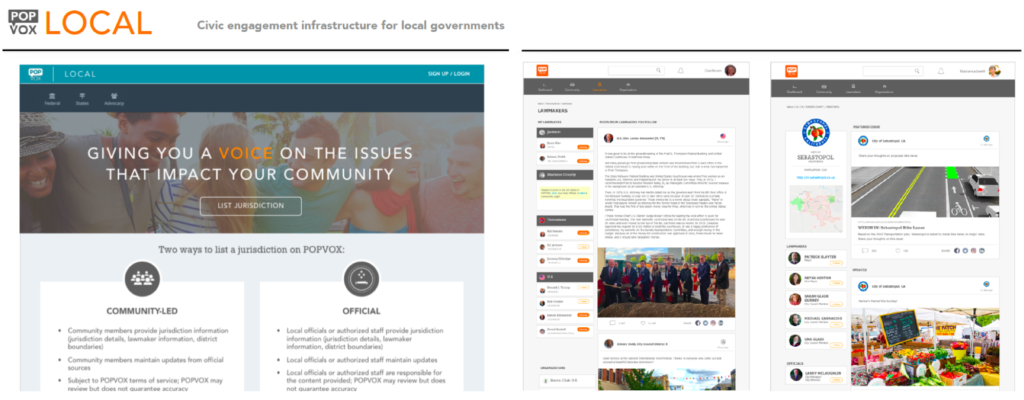 What Can a Body Do?: How We Meet the Built World by Sara Hendren
What Can a Body Do?: How We Meet the Built World by Sara Hendren
My rating: 5 of 5 stars
Disclosure: The author is a friend and a colleague. I have known her and her work for 10+ years. As part of the Awesome Foundation in Boston I helped select her Accessible Icon Project to receive a $1000 grant to print and distribute its graffiti stickers.
Though I know the author personally and have been excited for her fully realized thesis on disability and design, I am confident in saying this book deserves 5 stars for the last chapter alone. Hendren’s reflection on how she came to appreciate “crip time” as the parent of a son with Down syndrome is profoundly moving and insightful. The chapter is anchored by her honest retelling of the difficulty of shifting her mindset and moving past the dehumanizing and stigmatizing industrial age narratives of productivity, efficiency, and ordinality of people, by which medical professionals and many in society view her son. By connecting with a wider community of people with disabilities and those who love and respect them, she slowly refines a lens on the world that offers a better narrative, a society in which we choose humanity, dignity, and interdependency—a world we could build together.
The introduction to What Can a Body Do? sets the themes for the book—forcing us to rethink our conceptions of disability and people with disabilities and consider the innovative energy they have always brought to the world and how our world has been made better by it. When we understand that all technology is actually assistive technology and all bodies are different, we free ourselves from many limiting beliefs about what design is and should do. We also appreciate the beauty possible in all expressions of life and that we are all deserving of spaces and things that allow us to express ourselves.
I related to this book even though I am someone dripping with privilege and ability. White, male, cisgender, cissexual, able-bodied, and able-minded, I have few attributes that would be described as disability. My tallness is usually understood as a particularly desirable trait. But that does not mean that technology and the built world are necessarily friendly to me. This book gave me some language and perspective to make sense of my own experience. My body is not average. Fixed seats on buses and airplanes can be painfully uncomfortable to me. In fact, I am asked to pay more to find a seat that fits me on a flight. When bodies defy the narrow boundaries of “normal,” outliers like me can sometimes seek (or pay for) “accommodation” or they might be left out.
Mass production, just like the mass housing of people with disabilities to provide specialized medical care, is a modern phenomenon. We used to tailor clothing, furniture, spaces, and understood the members of our family with disabilities as family members, different like everyone was different. It took (and continues to take) disability-rights activists to shame us as a society into seeing the dehumanizing and disempowering ways we had built the world, assuming those with bodies and minds outside of the statistical average were not really a part of our world. In the process, these activists have given us curb cuts for parents with strollers and older people. They gave us spaces and mobility options reserved for people with disabilities, so that they can easily access public and private places through close parking spaces, ramps, and elevators. We all benefit from these features.
Through chapters challenging our preconceived notions about limbs, chairs, rooms, streets, and clocks, Sara Hendren provides a tour through the built world and we meet people who have met the challenges posed by a world not designed for them through invention, grace, and prophetic visions of what we could be and do together. I strongly recommend this book to my colleagues in the design and engineering fields but also to many interested in civics and democracy. The questions the author poses are about what we should value, how we should see ourselves in the world, how we should relate to one another, and how we define diversity, inclusion, and community.



